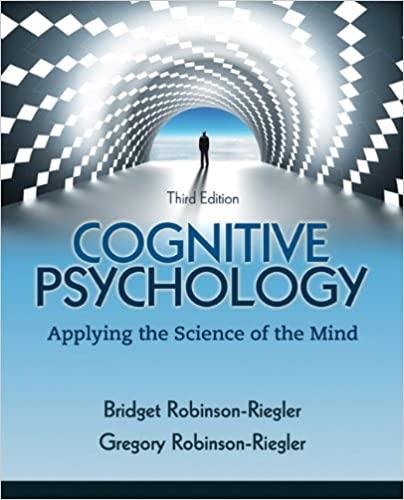Answered step by step
Verified Expert Solution
Question
1 Approved Answer
There is an incorrect perception of Dissociative Identity Disorder that most of the world sees. DID is extremely rare: A study of Upstate New

There is an incorrect perception of Dissociative Identity Disorder that most of the world sees. DID is extremely rare: A study of Upstate New York residents found that "1.5% of their sample experienced symptoms consistent with dissociative identity disorder in the previous year (Johnson et al., 2006)." Unlike other mental illnesses, such as depression or anxiety, that are more commonly witnessed or experienced in day to day life, people get their perception of Dissociative Identity Disorder from the media. A noted example is the 1970s book and movie adaptation of Sybil, a story about a woman with sixteen different personalities. The movie was dramatized and greatly influenced people to believe they had DID. This also resulted in a large increase of diagnosis in the early 1980s. There were more diagnoses then, than in the following twenty years after 1986 ("3.9 Dissociative Disorders."). Even current movies such as M. Night Shyamalan's Split in 2016 continued this misconception of what DID is. The main character transforms into multiple personalities throughout the movie, one of them being a "beast" that has superhuman strength. Not only is this extremely inaccurate, but it is also highly offensive to insinuate that people with Dissociative Identity Disorder are not human. 95% of people with DID experienced childhood abuse and trauma. This abuse leads them to a state of dissociation and eventually develop multiple personalities. These people are victims themselves, but all media displays is their violence ("3.9 Dissociative Disorders."). There are very few aspects of the movie that show some realistic aspects about DID. For example, the main character does not remember what happened when he was a different personality. This can be very common for people with DID, blacking out and being unable to recall past actions as a former personality. He also has auditory and visual hallucinations. While the media has led to many people faking the disorder, there are really people out there who have to live with DID, and they deserve a better and accurate representation in the media.
Step by Step Solution
There are 3 Steps involved in it
Step: 1

Get Instant Access to Expert-Tailored Solutions
See step-by-step solutions with expert insights and AI powered tools for academic success
Step: 2

Step: 3

Ace Your Homework with AI
Get the answers you need in no time with our AI-driven, step-by-step assistance
Get Started


